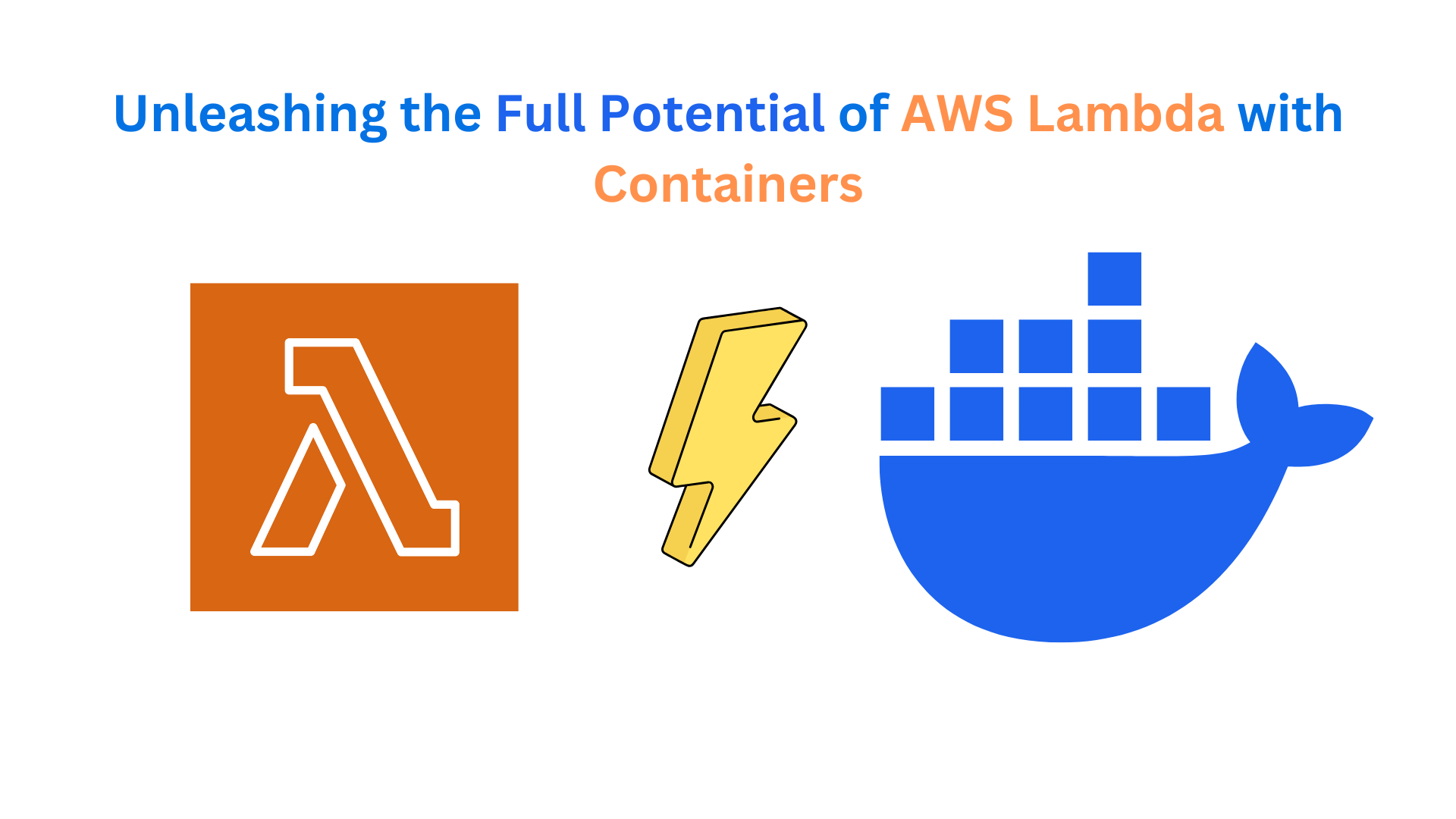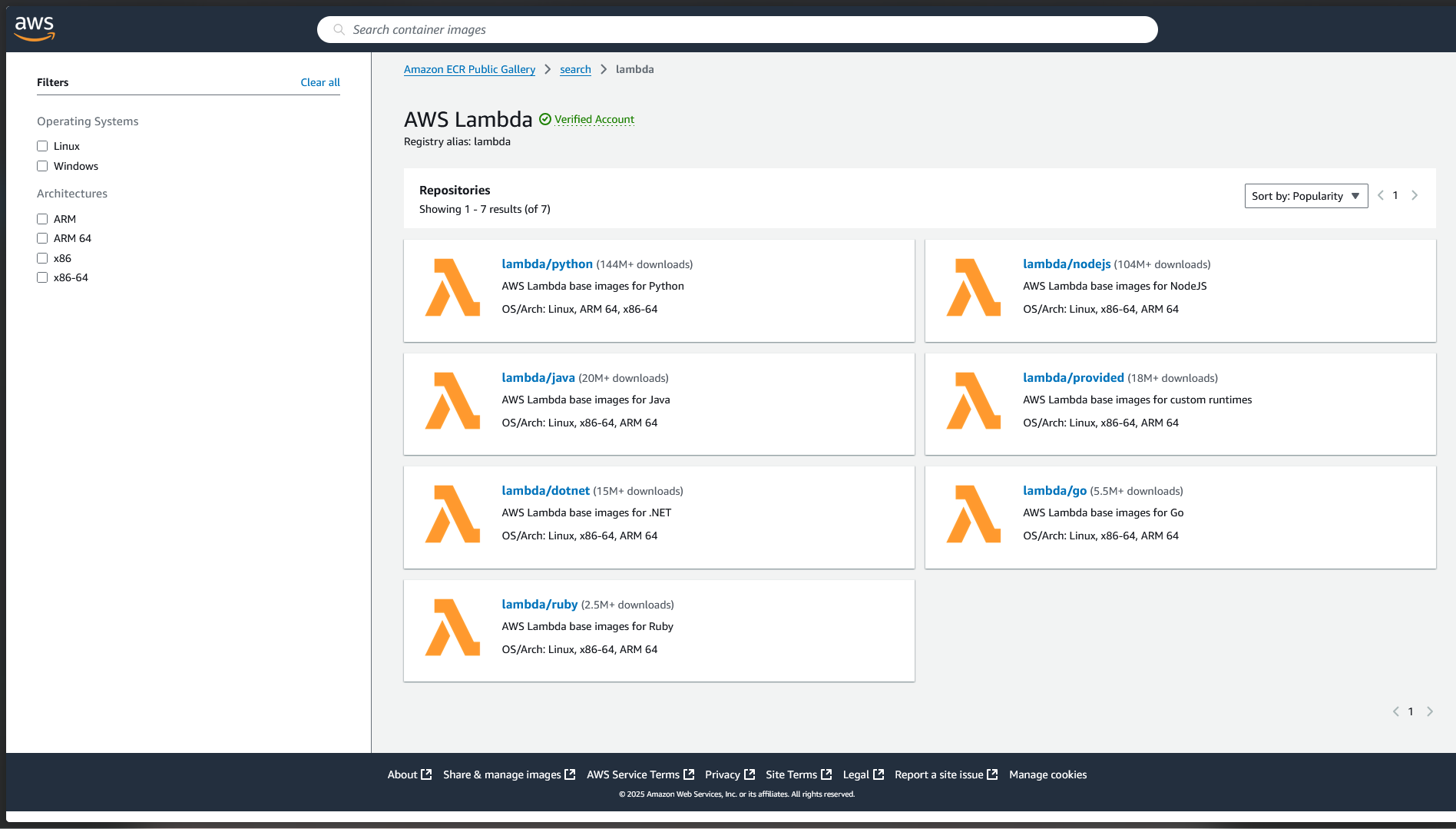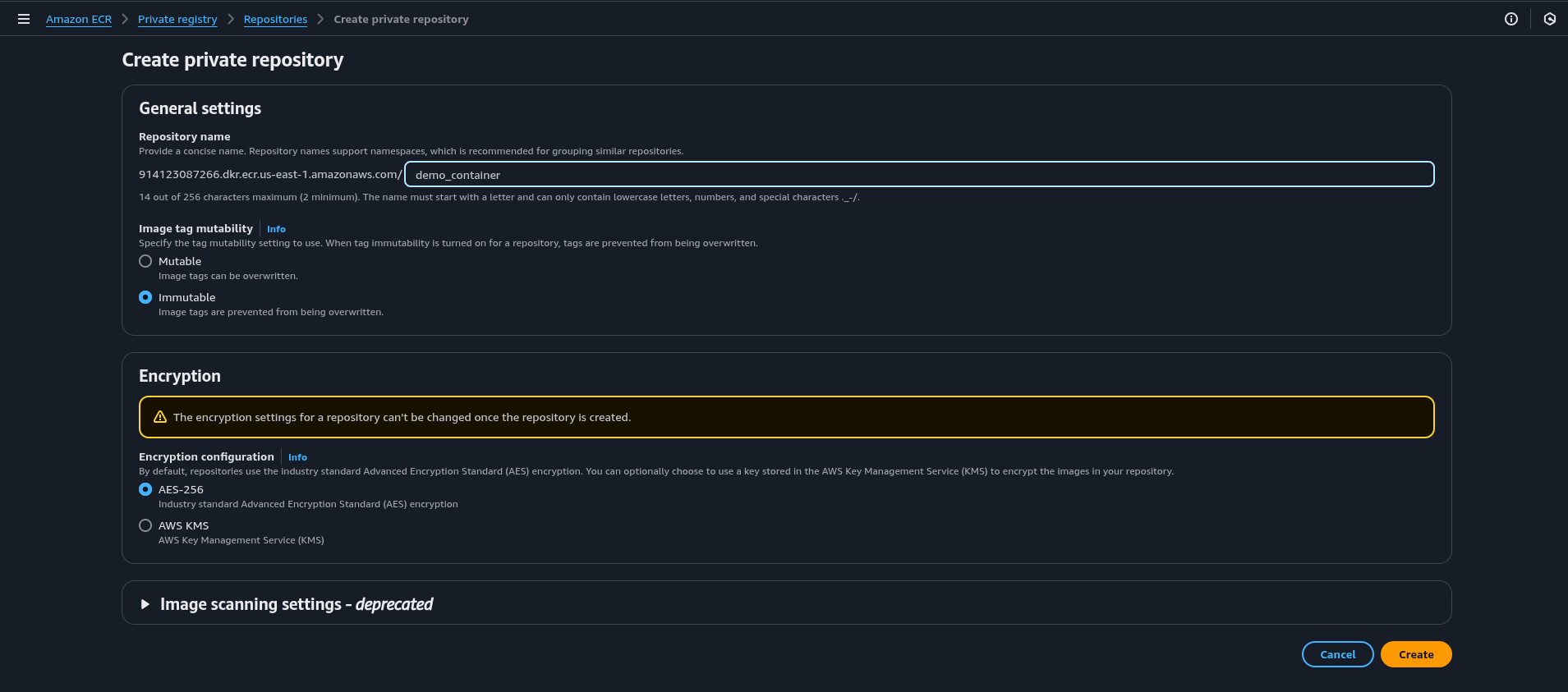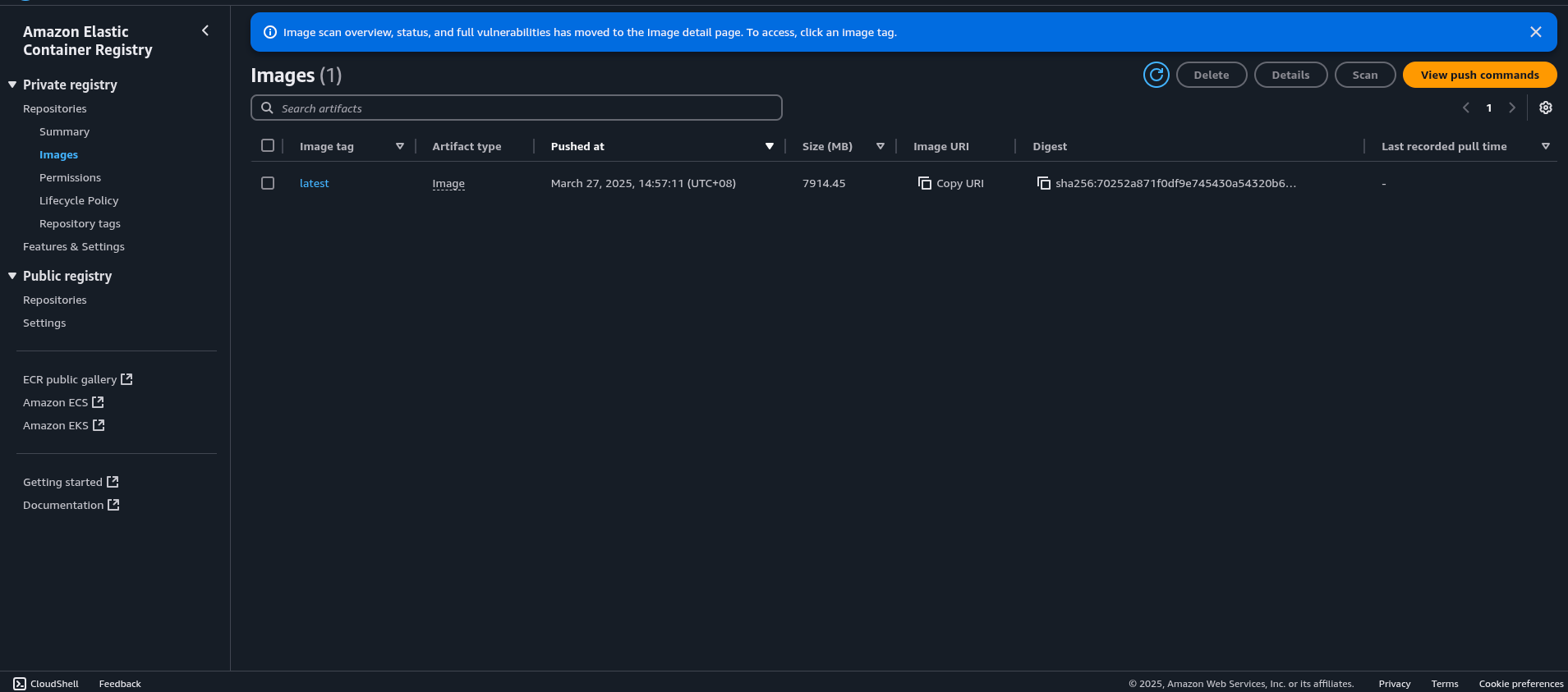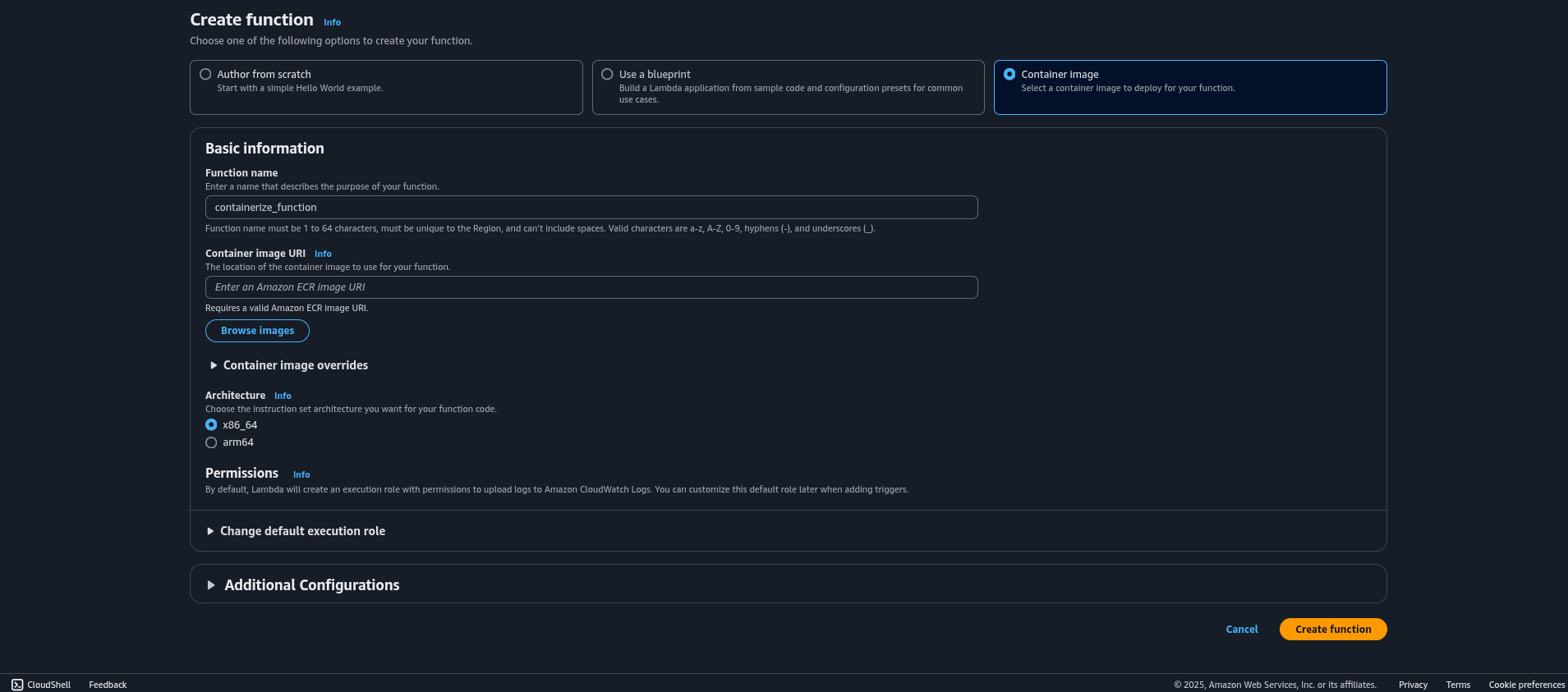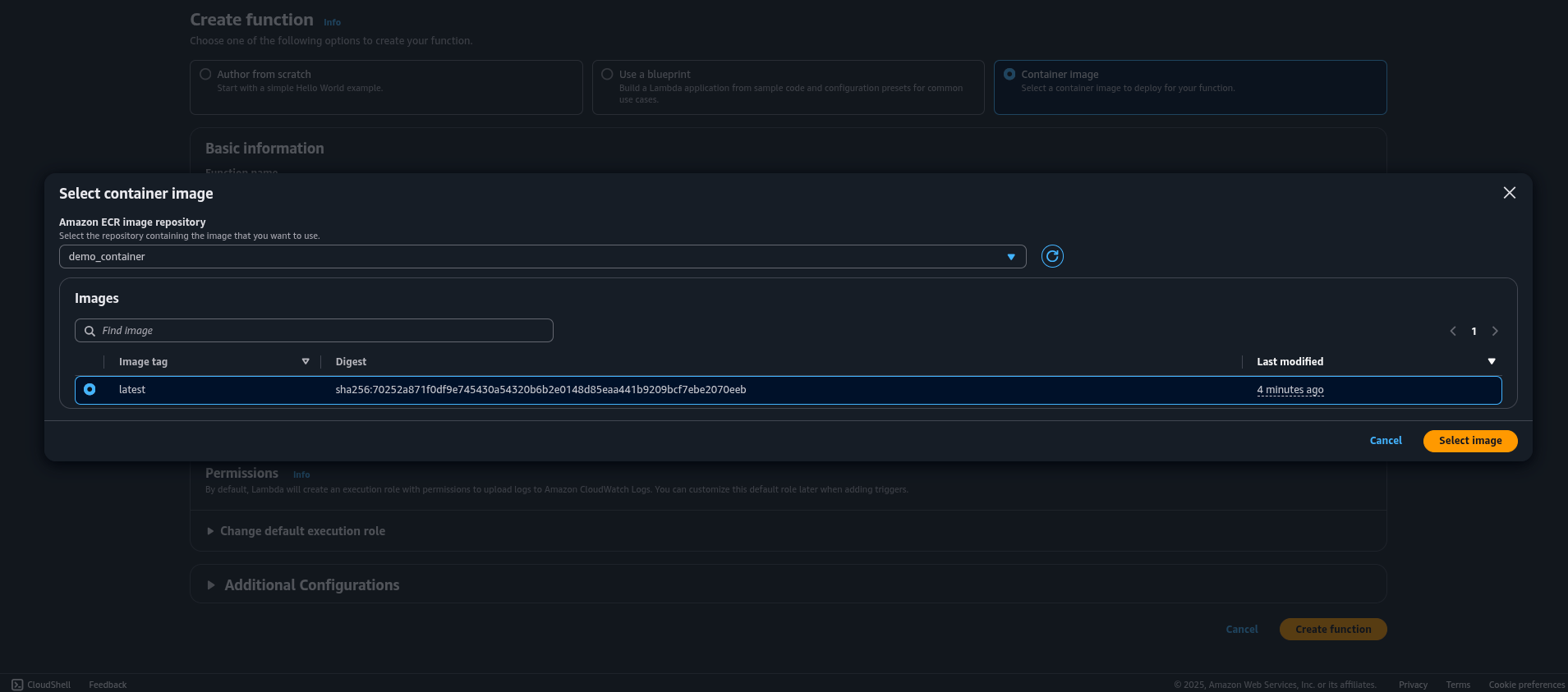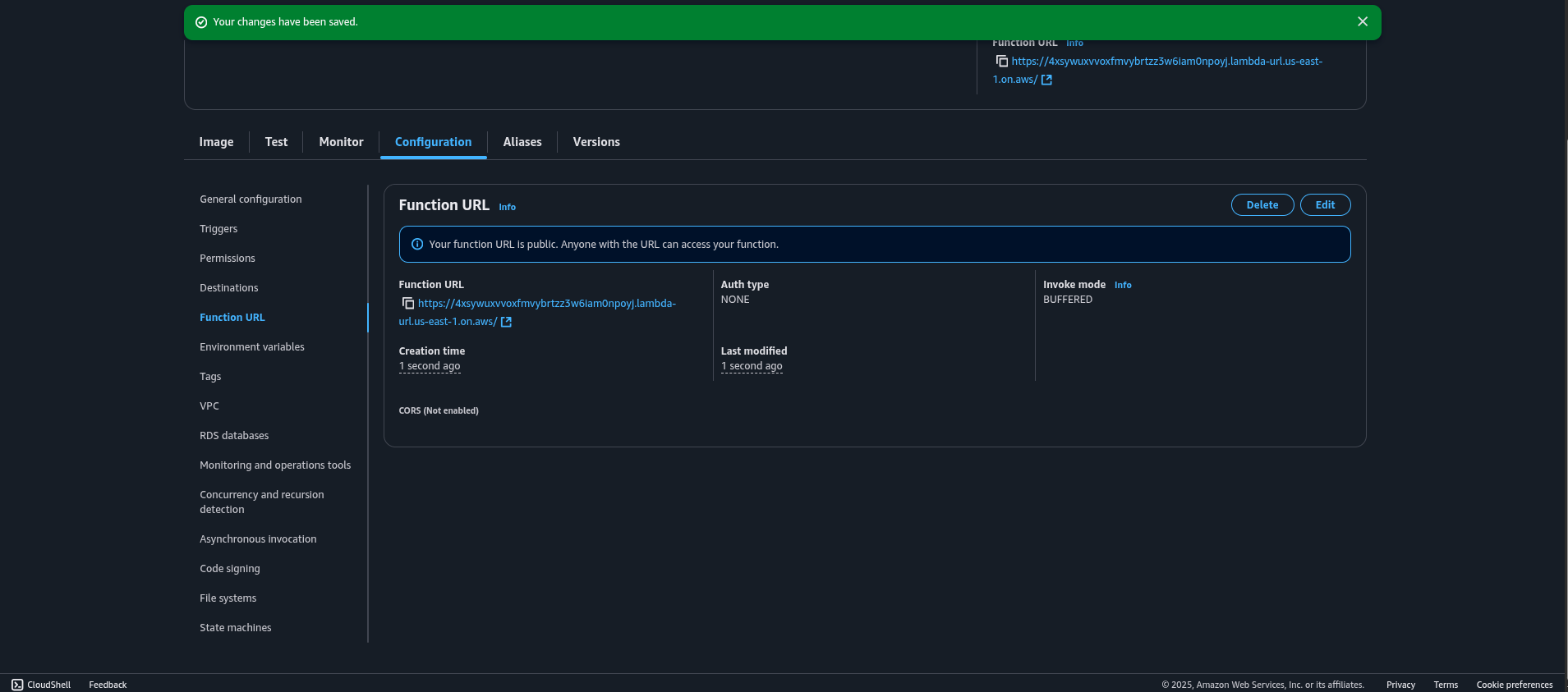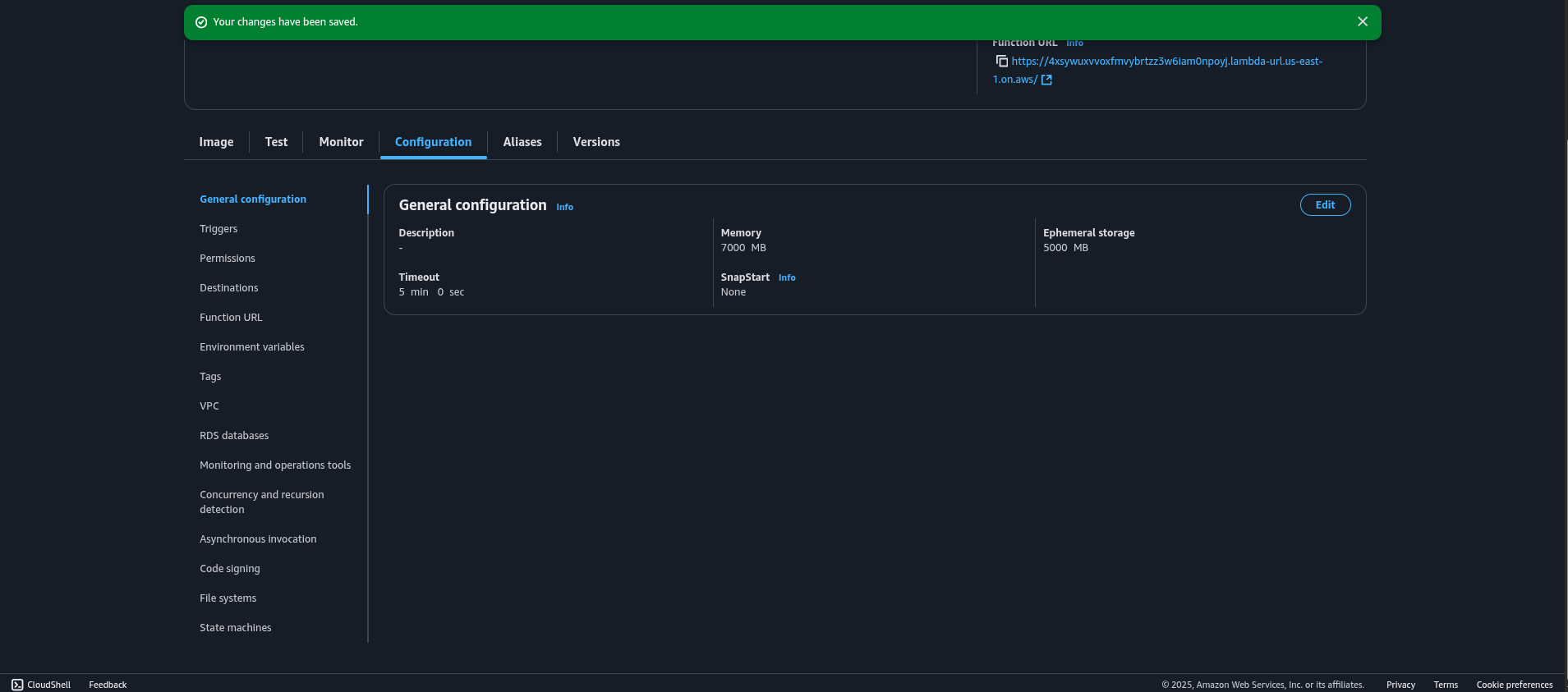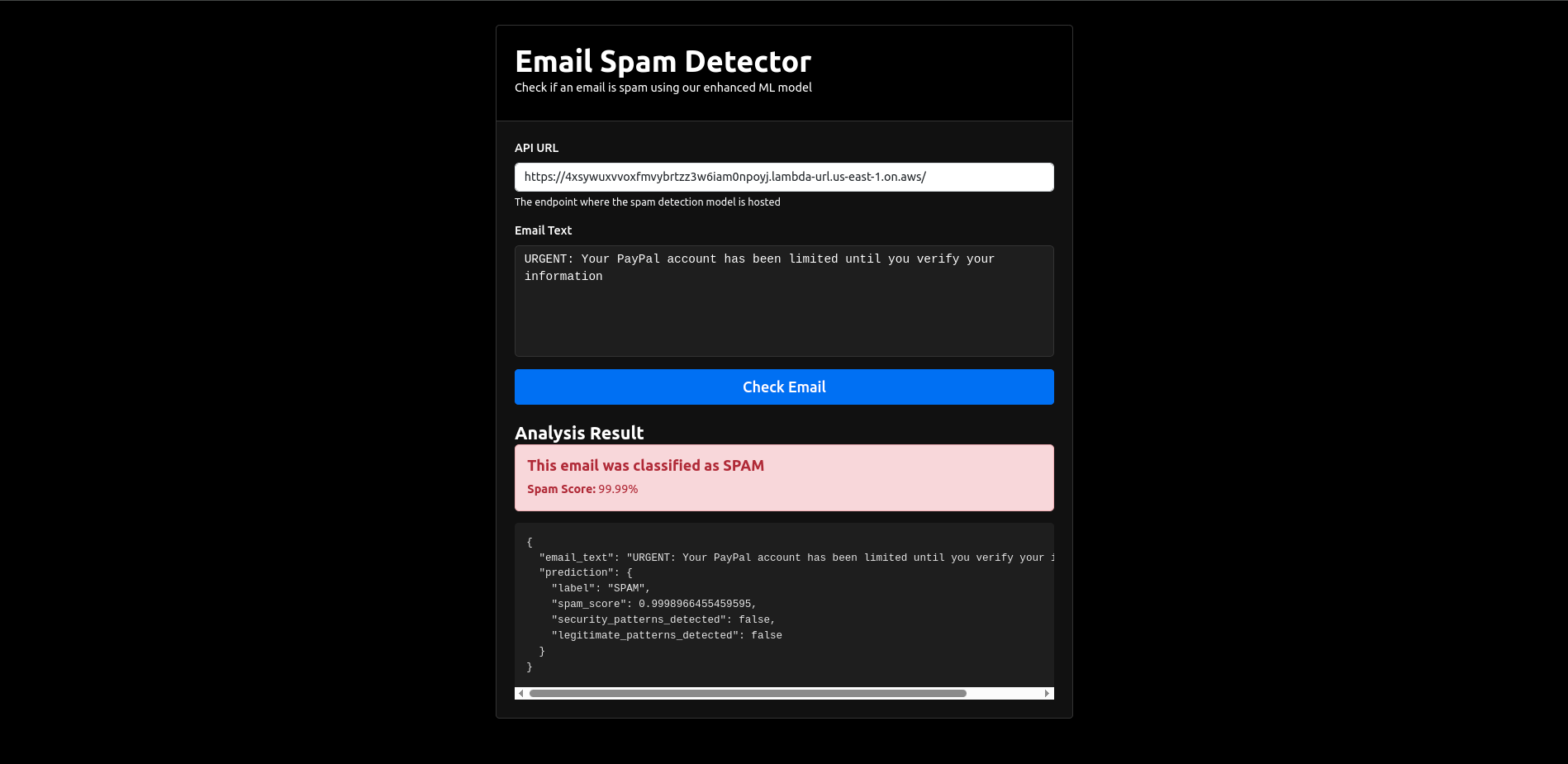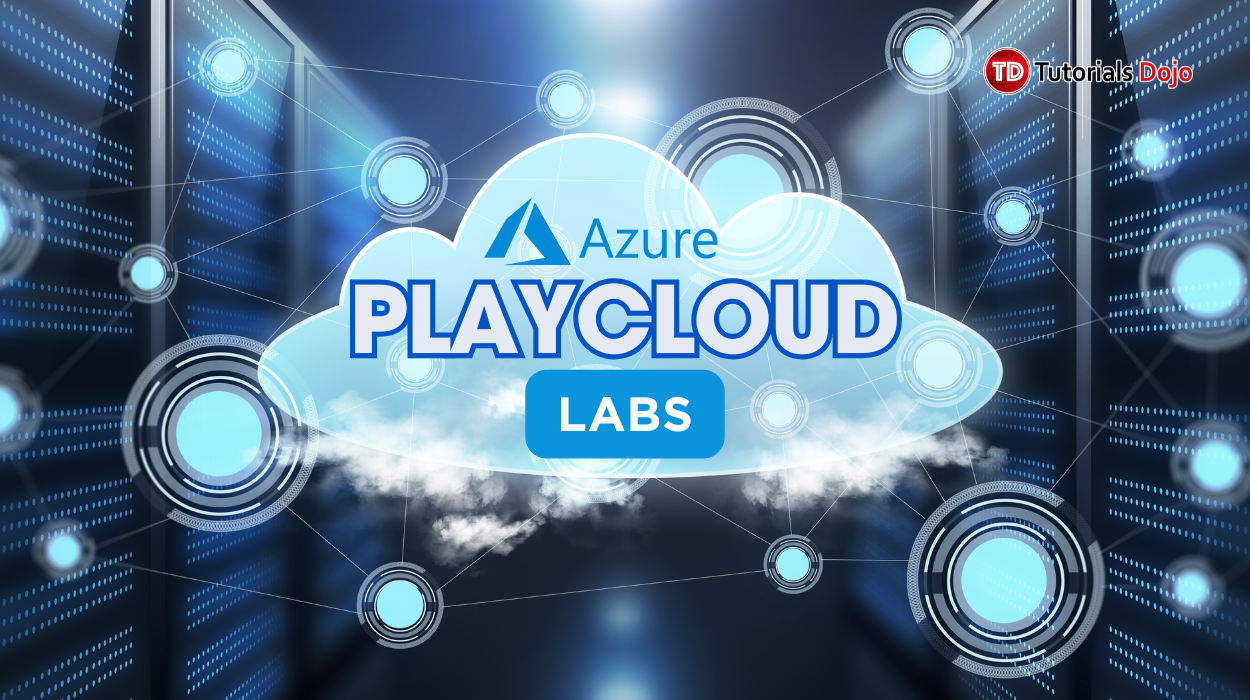AWS Lambda has revolutionized serverless computing by allowing developers to run code without the hassle of provisioning and managing servers. However, even though AWS Lambda functions are powerful, they still come with limitations that significantly impact scalability, dependency management, and runtime flexibility.
In this guide, we will explore the following:
- The limitations of traditional AWS Lambda and how Lambda Containers solve these issues.
- AWS-provided optimized container images
- A step-by-step tutorial how to build Lambda Containerized Functions
Let’s Dive in!
The Challenges of Traditional AWS Lambda & How Containers Solve Them
AWS Lambda does provide a lot of incredible benefits however, traditional ZIP-based deployments come with significant limitations. As a result, these limitations can hinder more complex applications. Let’s take a look at these challenges and how AWS Lambda Containers address them:
-
Deployment Package Size Constraints
AWS Lambda limits unzipped deployment packages to 250 MB, which can be restrictive for applications requiring:
-
- Large machine learning models exceeding hundreds of megabytes
- Complex applications with multiple dependencies
- Third-party libraries that do not fit within the package size restriction
How Containers Help: Lambda Containers support up to 10 GB in deployment size making them ideal for ML models, large applications, and custom software.
-
Limited Runtimes & Dependency Management
AWS Lambda only supports certain runtimes like Python, Node.js, Java, and Go which creates challenges like:
-
- Developers need a non-supported runtime (e.g Rust, Elixir, and many more)
- Dependencies must be manually bundled that increases deployment complexity
- Applications require system libraries or binaries not natively supported by AWS Lambda
How Containers Help: Lambda containers allow developers to bring any runtime and include all necessary dependencies inside the container image eliminating manual bundling.
-
No OS-Level Customization
AWS Lambda’s execution environment does not allow modifications to the underlying operating system which affects applications that:
-
- Require specialized software, libraries, or system tools
- Need custom security configurations
- Depend on OS-specific processing tools
How Containers Help: Containers provide full OS-level control allowing binaries, system tools, and specialized configuration to be installed as needed
-
Performance Issues Due to Cold Starts
AWS Lambda functions experience cold starts which occur when a function is invoked after a period of activity which leads to:
-
- Increased response times for latency-sensitive applications
- Performance bottlenecks in functions with numerous dependencies
- Poor user experience in real-time or synchronous applications
How Containers Help: By optimizing container images developers can reduce cold start times that leads to faster initialization and improved performance.
- CI/CD Integration Challenges
Traditional AWS Lambda requires specialized deployment tools making it harder to integrate with existing CI/CD workflows
How Containers Help: Since Lambda containers work seamlessly with Docker-based CI/CD pipelines, developers can easily integrate them into DevOps workflows using AWS CodeBuild, GitHub Actions, Jenkins, and Elastic Container Registry.
AWS-Optimized Container Images
To streamline deployment, AWS offers optimized base images for Lambda Containers. These images include pre-configured runtime environments for Lambda event handling (event and context) and essential system dependencies, simplifying the setup process. Check it out here: AWS ECR LAMBDA IMAGES
These images help reduce cold start times and improve performance by ensuring an optimized execution environment.
Demo: Deploying a Containerize Machine Learning Model to AWS Lambda
About the Lambda Function
The Containerize Lambda Function contains a pre-built Machine Learning Model for Email Fraud Detection and will be used as an api. The container’s size is approximately 10GB in which in a standard Lambda Deployment would be impossible.
Test The Lambda Function Locally
To build the docker image
- To build the docker image just simply run:
docker build -t <container_name> .
To test the docker image
- You can locally test the built docker image before deploying by running the following commands.
- To the container image:
docker run -p 9000:8080 <container_name> - Then you can test the api using this url:
http://localhost:9000/2015-03-31/functions/function/invocations
Code References:
Note: Make sure to follow how a AWS Lambda receives requests and context
Create an Elastic Container Registry
Upload the Docker Image to AWS ECR
To upload the Docker Image to AWS ECR follow these commands and modify it to match your AWS Account:
- Login first to AWS ECR using this command:
aws ecr get-login-password --region us-east-1 | docker login --username AWS --password-stdin <AWS_ACCOUNT_ID>.dkr.ecr.us-east-1.amazonaws.com - Build the Docker Image:
docker build -t <CONTAINER_NAME> . - Tag the Docker Image:
docker tag <CONTAINER_NAME>:latest <AWS_ACCOUNT_ID>.dkr.ecr.us-east-1.amazonaws.com/<CONTAINER_NAME>:latest - Push the Docker Image to ECR:
docker push <AWS_ACCOUNT_ID>.dkr.ecr.us-east-1.amazonaws.com/<CONTAINER_NAME>:latest
Deploy a New AWS Lambda Container Function
Create a new AWS Lambda Function and choose the Container Image
Click Browse Images and choose the repository you created and choose the one with the latest tag
Additional Configurations: Create a Lambda Function URL
Additional Configurations: Modified the Timeout and Memory for the Machine Learning Model to use. This will depend on your use-case.
Testing the Containerize Machine Learning Model
I have here a simple web ui that sends a request to the function url that sends a body with the email_text field and returns a result from the Lambda Function.
Here is the Lambda Function Logs
Conclusion
AWS Lambda provides a powerful serverless computing experience; however, traditional ZIP-based deployments have limitations that can as a result, hinder complex applications.. By using AWS Lambda Containers, developers can overcome these challenges with larger deployment sizes, expanded runtime support, OS-level customization, and seamless CI/CD integration. This approach enhances scalability, flexibility, and performance, making serverless applications more efficient and adaptable to diverse workloads. With the power of containers we are able to deploy various applications just like in our demo, a complicated and heavy application running on AWS Lambda.

